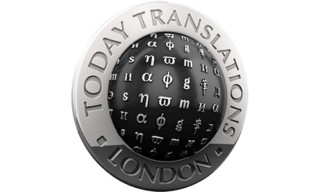We have all heard the paradigm that more than half (55 per cent to be precise) of our communication is shaped by body language. Our words are constantly supported or contradicted by facial expressions, hand movements, and body postures. However, do we pay enough attention to cultural gestures when communicating with international partners?
We start imitating other people’s body language so early in our childhood that we tend to take it for granted. Usually, there is not a clear learning process of body movements, which is why people have the impression that gestures are universal. Furthermore, before travelling to a foreign country, a person will learn the key main phrases and some cultural etiquette, forgetting that gestures can be just as important.
However, carefully considering the gesture codes is crucial, particularly in business meetings. With or without an interpreter beside you, a good mutual understanding of gestures can create an immediate rapport, build a positive relationship or even create an appropriate message that words sometimes cannot fill.
We have looked into a few interesting cultural gesture explanations that are useful at a multinational business meeting.
APPROVAL
To say “Yes” in Iran – one has to dip their head down with a slight turn.
In Saudi Arabia, approval is demonstrated by shaking the head from side to side. This piece of information can turn the situation around, from assuming it is a “Maybe” to knowing it is a “Certainly!”
Similarly, in Greece, tilting your head to left, then right means “yes”.
Bulgarians shake their heads to say “Yes”, which could be confusing for directions to begin with.
NEGATION
A negation in Iran is represented by the movement of the head up and then back sharply.
The Lebanon say “No” by pointing the head sharply upward and raising the eyebrows.
In Saudi Arabia, people tip their head backward and click the tongue to say “no”.
Germans move their heads back and forth to signify negation.
Slightly nodding the head upward or lifting eyebrows upward signals “No” in Greece.
Again, Bulgarians do it the other way around again – nodding meaning “No!”
POSITIVE FEEDBACK
In Argentina, raising a fist in the air with knuckles pointed outwards signifies victory. Not to be mixed up with rage or imminence of conflict.
Brazilians pinch the earlobe between thumb and forefinger to express appreciation.
In Saudi Arabia, taking someone’s elbow or holding hands signifies respect and friendship.
If a person from India taps on your shoulder and then his/her own forehead, it does not mean they are playing a game, they are politely apologising.
In Germany, clasping hands together and raising them above the head shows appreciation.
If you are greeted with applause in Nigeria, it means you are considered an important guest.
Applause is a common gesture in Zimbabwe as well – they demonstrate appreciation and politeness.
NEGATIVE FEEDBACK
In Mexico, hands on hips are a sign of hostility. In Europe, this gesture signifies complex thinking or readiness to work, so be careful not to misunderstand!
If a Colombian taps the underside of his/her elbow with the fingers of the other hand, it does not mean they are meditating, but that someone close by is being stingy.
Unlike Argentina, raising a closed fist into the air in Lebanon means a rude gesture – not victory!
In Chile, if someone puts the palm upwards and then spreads the fingers, it signifies that someone is stupid. They are definitely not high-fiving you!
In Japan, if a person waves their hand, palm outward in front of their face, it means that they do not understand the message or they do not deserve what they are being offered.
If a Frenchman pretends to play a flute using his hands, it means that someone is being loud and annoying.
If an Israeli person points down at the upturned palm of one hand with the forefinger of the other, it means that “grass will grow on my hand” before something that was mentioned will happen. Could be a very subtle business message!
These are only a few examples of confusing cultural gestures. Every culture is extremely rich in body language signals. (We have not even gotten into deciphering the Italian ones!) Are there any interesting or misleading gestures in your culture? Has any gesture ever gotten you into trouble?
At Today Translations, our interpreters are always focused to conveying the complete message – words, tonality and gestures – making sure that you are on the same page as your potential clients and business partners. Today Translations is a professional translation and interpreting company based in the heart of London. To get in touch with us regarding your project, email us at [email protected] or call us on +44 (0) 207 397 2770 .

